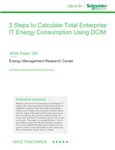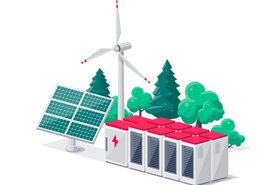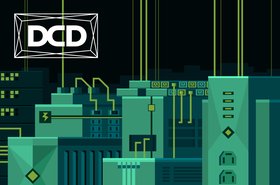As energy market volatility continues to take its toll, ensuring a robust critical power supply has become a major priority for most businesses.
This is even more pertinent for the energy-intensive data center industry where it is estimated that power outages resulting in a cost impact of over $1 million are becoming more common.
The recent geopolitical climate has quickly exposed weaknesses in the energy system, especially for those nations dependent on fossil fuels. But even before then increasing demand, tighter supply margins, and the high variability associated with renewable power generation have continued to increase the potential for disruption to energy supplies.
This has left data centers particularly vulnerable. Globally, it’s estimated that data centers account for more than one percent of all electricity usage. As the world’s data centers are consuming more and more energy, we need to look for more ways to be leaner and ensure maximum uptime.
After all, even the shortest power outage can have a huge revenue impact, not to mention the implications in terms of lost data, corrupt files, and damaged equipment.
Traditionally, diesel generators have been the solution to ensure that mission-critical applications never go offline in the event of a power outage. However, this option is becoming increasingly untenable given the associated carbon impact.
At the same time, the increasing adoption of renewable energy, combined with increased levels of infrastructure redundancy at the IT level, are leading to new design best practices across the data center sector.
Protecting data
Arguably, one of the most important technologies for any future-fit data center is the battery energy storage system (BESS).
Already, many data center operators have turned to onsite generation – such as solar photovoltaic (PV) panels or wind turbines – to generate their own clean energy and supplement grid energy.
Using a BESS, it becomes possible to store that energy and redeploy it as needed to use during a critical time to ensure the security of the energy supply and, in turn, negate the revenue impact, legalities, and reputational damage associated with a system failure.
Other great benefits are reactive power compensation, peak shaving and shifting, and maximization of self-generation.
When partnered with an energy management system (EMS), the data and analytics afforded by BESS can provide the insights needed to better match energy demand to requirements and improve overall efficiency.
Crucially, as many data centers transition from long-term contracts including power not used to a ‘pay-for-use’ model this can help build a new layer of resilience through better foresight and visibility of highly fluctuating power requirements.
Importantly, BESS is not only for renewable energy – it can be used as a standalone critical backup solution in conjunction with traditional grid-based energy too.
Revenue opportunity
With more non-synchronous renewable generation on the system, the grid faces more pressure to balance supply more effectively against demand.
BESS has a big part to play here. This is because when renewable energy systems are producing more power than a site needs, operators can take the opportunity to sell it back to the grid as a prosumer.
For data centers, this valuable income can help offset energy costs while helping to play a role in supporting reliable, secure, and clean sources of energy.
Key enabler
The data center industry’s vast power requirement will continue to soar as trends such as 5G, Artificial Intelligence (AI), and online streaming push data needs to the limit. Yet, energy market volatility and grid instability remain a very real threat to power supply.
In this way, it’s easy to see why BESS technology is often described as a key enabler of the energy transition – helping data centers make huge leaps in energy efficiency, energy optimization, and sustainability, while maintaining continuous operations.
More in Sustainability
-

-

Sponsored New fuels of tomorrow
-




